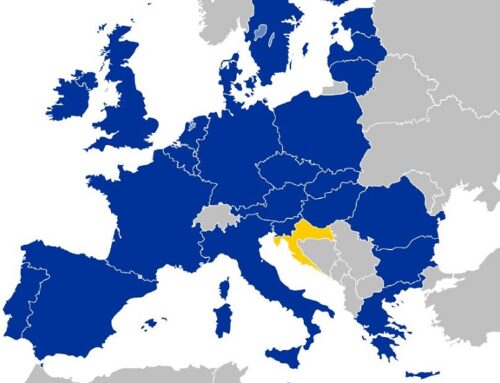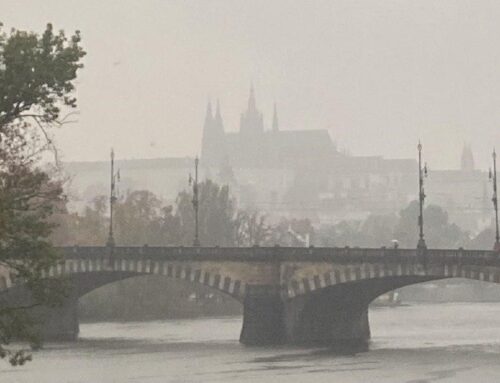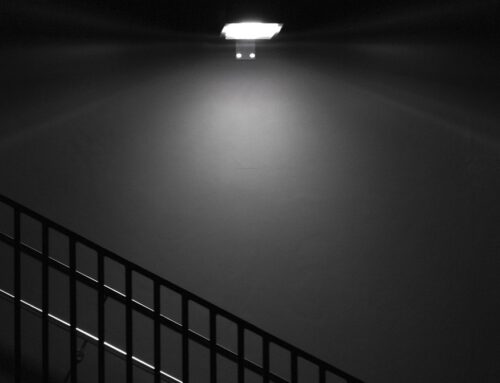Hadžera Duharkić
The dissolution of the Socialist Federal Republic of Yugoslavia in the early 1990s marked the end of a complex political experiment that spanned several decades. As the constituent republics embarked on the path to independence, they found themselves confronted not only with the challenges of statehood but also with the multifaceted legacy of their communist past. The echoes of socialism, once the binding force of a diverse federation, continue to reverberate through the socio-political landscapes of these countries. Each grapples with its unique historical experiences, intricate interethnic relationships, and the lingering specter of the Yugoslav era. Central to this exploration is the examination of how these nations navigate the remnants of their communist past—be it in the form of monuments, cultural narratives, or the broader public discourse that shapes contemporary identity.
Bosnia, Croatia, and Serbia serve as compelling case studies, each offering a distinct perspective on the challenges and opportunities presented by the legacy of socialism. From war-torn narratives to contested historical interpretations, the examination of communist monuments becomes a lens through which we can understand the complexities of post-Yugoslav identity formation. Through a comprehensive analysis of these intertwined elements, this essay seeks to unravel the intricate threads that bind the region’s historical consciousness, shedding light on the nuanced ways in which these nations confront, negotiate, and reconcile with their communist pasts.
Serbia
While each ex-Yugoslav country grappled with its socialist past, Serbia has uniquely positioned itself as the rightful successor to Yugoslavia. This distinctive self-perception is rooted in the historical context of attempts to centralize Yugoslavia, prominently led by President Slobodan Milošević.
His Gazimestan speech in June 1989 is remembered as a significant event that set the stage for the political developments leading to the disintegration of Yugoslavia in the 1990s. The speech is named after the location, Gazimestan, which is a memorial site commemorating the Battle of Kosovo that took place in 1389.
This was used by the modern-day Serb nationalist as a territorial claim on Kosovo. The claim that Kosovo was a “medieval” cradle of modern Serbia’s statehood disregarded the ethnic criteria and the fact that Kosovo Albanians have been in majority in Kosovo for centuries. In his Gazimestan speech, Milošević introduced belligerent rhetoric by putting the interest of Serbia above the interest of other ethnic group, nations, and republics. Milošević’s words unsettled the Yugoslav federal and republican leaders who sat puzzled and alarmed: one of the dignitaries present qualified the tone and the words spoken as “sabre rattling”.[1]
While it is often cited in discussions as the beginning of the end of Yugoslavia, the Gazimestan speech, a seminal moment in this narrative, emphasized the historical ties between Serbs and their medieval heritage, thereby intertwining the concept of a centralized Yugoslavia with Serbian nationalism. This historical confluence became a cornerstone in Serbia’s self-perception as the natural heir to Yugoslavia. The Battle of Kosovo in 1389, a key theme in his Gazimestan speech, was presented as a shared historical heritage for all Yugoslav nations, emphasizing the need for unity. Milošević portrayed himself as a proponent of Yugoslav unity. He argued that the preservation of a united Yugoslavia was in the best interest of all its constituent nations, including Serbs. In his narrative, Serbian nationalism was not in opposition to Yugoslav nationalism but rather a crucial component of it. While advocating for unity, Milošević’s vision of Yugoslavia was more unitary, with a strong central government in Belgrade. This centralized approach appealed to his base in Serbia, where the idea of a powerful and unified Yugoslavia under Serbian leadership found support.
Certain political parties and movements in Serbia have expressed support for Milošević or adopted positions aligned with his policies. For instance, the Serbian Radical Party (SRS), led by Vojislav Šešelj, has been associated with nationalist rhetoric and a historical revisionist stance, at times expressing admiration for Milošević’s leadership. Over the past years they have been the leaders of the initiative for naming a street or a square in Belgrade with his name.[2] This has been a controversial topic and the leading party (Serbian Progress Party) in Serbia hasn’t stated their opinion as of now. In December 2023 the Memorial Room for Slobodan Milošević opened in Niš in the building of the City Board of SPS.[3] It should be mentioned that the SPS has been part of the ruling coalition with the Serbian Progressive Party for years.
These examples could be indications that the current Serbian political system is not opposed to Milošević’s persona which also has some ideological implications. However, perhaps the best example that confirms Serbia’s identification with its Yugoslavian past is the fact that the only comprehensive museum dedicated to Socialist Yugoslavia is the Museum of Yugoslavia in Belgrade. The Museum of Yugoslavia in Belgrade stands as a tangible manifestation of Serbia’s engagement with its communist past. While the museum provides a comprehensive exploration of Yugoslavia, it notably omits exhibits related to the wars of the 1990s. This selective approach reflects the nuanced balancing act Serbia faces — preserving the positive aspects of Yugoslavia’s socialist legacy while navigating the contentious issues that emerged during its disintegration. The museum becomes a space where the complexities of historical continuity and selective memory converge, offering insights into how Serbia grapples with its multifaceted past.
Serbia’s self-perception as the successor to Yugoslavia is intricately tied to the legacy of centralized governance and nationalist sentiments championed during the Milošević era. The establishment of the Museum of Yugoslavia underscores Serbia’s commitment to preserving the memory of the socialist federation, even with certain omissions. As the country continues to navigate its historical landscape, the complexities of its relationship with the Yugoslav past remain a crucial aspect of understanding contemporary Serbian identity and its place in the broader regional context.
Croatia
Among the post Yugoslavian nations, Croatia has grappled with the challenges of constructing a national identity while simultaneously addressing the complexities of its socialist history. Croatia’s journey to independence was marred by the Croatian War of Independence (1991-1995), a conflict that accompanied the broader disintegration of Yugoslavia. The war, marked by ethnic tensions and violence, played a crucial role in shaping Croatia’s perception of its Yugoslavian past. The narrative surrounding the war has, in turn, influenced how the country approaches its socialist history.
Namely, the approach to the name of the war itself, i.e. the fact that Croatia calls it the War of Independence, or ”Homeland War” is an indicator of a different approach to Yugoslav history, bearing in mind that the other post-Yugoslav states do not have clearly defined names for the wars that befell them in the 1990s.
In 2000, the Croatian National Assembly issued a ‘Declaration on the Homeland War’, which states that its legacy is unequivocally accepted by all citizens of the country, leaving no room for questioning the victor’s perspective.[4]
Croatia has actively participated in international efforts to address war crimes committed during the conflicts of the 1990s. The International Criminal Tribunal for the former Yugoslavia (ICTY) and domestic courts have been instrumental in holding individuals accountable for war crimes, although the ICTY’s decision not to convict Croatian leaders responsible for the crimes in Croatia have been criticized. Despite these efforts, a research paper on the opinions of Croatian youth about the war crimes Croatia committed in the 90s, conducted by the Youth Initiative For Human Rights Croatia, shows lack of education about Croatia’s dark sides of history during the War of Independence among young people.[5]
The establishment of museums and memorial sites has been a significant aspect of Croatia’s engagement with its Yugoslavian past. The Museum of the War of Independence in Karlovac serves as one of the key institutions dedicated to preserving the memory of the 1990s conflicts and shaping the narratives about them. While focusing on the recent war, it also reflects broader themes of national resilience and identity. Perhaps the existence of this museum is one of the best indications of how strongly the War of Independence is connected to the modern Croatian identity.
The active renaming of streets and places associated with the communist era is another tangible expression of Croatia’s efforts to reshape its public space in line with the post-independence narrative. For example, as of now, the only square in Zagreb that has any connection with the communist ideology is the Square of Victims of Fascism. According to an article from 2009 21% of the street names in Donji Grad (Zagreb old town) have been changed by then[6], and the number of renamed streets has grown since 2009. By replacing names that may evoke memories of the Yugoslav period, Croatia seeks to redefine its historical landscape and emphasize symbols and figures associated with the struggle for independence. This process is reflective of broader trends seen across the region, where the renaming of streets becomes a symbolic act of redefining identity and distancing from the communist legacy.
Croatia’s interpretation of the war of the 1990s as the Homeland War reflects a distinctive narrative that emphasizes the struggle for independence and the desire to break free from the perceived constraints of communism and forced cooperation within the Yugoslav federation. The terminology “Homeland War” underscores the notion that the conflict was a fight for the nation’s sovereignty and the establishment of an independent Croatian state. This framing of the war contributes to the construction of a specific national identity, rooted in the idea of self-determination and perceived liberation from the socialist past. However, this narrative is created at the expense of the victims of Croatian nationalism, whose voices are not being heard. Due to the fact that it is a part of the EU, it is rarely included in the peacebuilding efforts in the Western Balkans region, which only fuels the one-sided perception of history in Croatia.
Bosnia and Herzegovina
The Yugoslav Wars, which unfolded from 1991 to 2001, were characterized by ethnic and religious tensions, leading to the breakup of Yugoslavia into several independent states, including Bosnia and Herzegovina. The war in Bosnia, particularly, was marked by egregious atrocities, including ethnic cleansing, mass displacement, and the infamous Srebrenica genocide in 1995. The legacy of this tumultuous period left Bosnia deeply divided along ethnic lines, with Bosniaks, Croats, and Serbs residing in separate entities, each with its own political structure. One of the key challenges Bosnia faces in addressing its Yugoslavian past is the deeply ingrained ethnic divisions. The Dayton Agreement, which ended the conflict in 1995, solidified these divisions by establishing the Federation of Bosnia and Herzegovina and Republika Srpska as separate entities within the country. The political landscape remains fragmented, hindering efforts to create a unified national narrative that encompasses the shared experiences of all citizens. Speaking of only the education system, Bosnia and Herzegovina has more than 10 different education systems, each with its own approach to history, and its own textbooks. There also exists the so-called “two schools under one roof” phenomenon, where children of different ethnicities in some places go to the same school but have different curricula, different teachers, and different textbooks that reflect the perception of the historical narratives of their ethnicity. Efforts have been made to revise textbooks and curricula to present a more balanced and inclusive narrative. However, challenges persist as different ethnic groups often have divergent views on historical events.
Another facet of dealing with the Yugoslavian past involves holding perpetrators accountable for war crimes. The International Criminal Tribunal for the former Yugoslavia (ICTY) played a crucial role in prosecuting individuals responsible for atrocities. However, the quest for justice continues at both the international and domestic levels, as some war criminals remain at large and nationalistic sentiments impede progress.
The phenomenon of Yugonostalgia seems to be the most prominent in Bosnia and Herzegovina. There still exist communities of Yugonostalgics who consider themselves Yugoslavian before anything else. In Sarajevo, as well as in some other cities, there are cafes, bars, souvenir shops and similar places that are created around this sentiment, featuring photos and objects related to Josip Broz Tito, the 1984 olympics, the World War II, and such.
Post-conflict Yugoslavism and Yugonostalgia, as articulated by people living on this territory today constitute an active expression of ethnic tolerance, peaceful multiethnic co-existence, and mutual respect.[7]
Nevertheless, the discussions about Yugoslavia in Bosnia and Herzegovina usually still revolve about the war and each side’s perception on it. The continuation of Dayton agreement implementation is a daily reminder of these conflicts, and as long as it is implemented, a unified and coherent perception about the communist past will be impossible to exist.
As long as Kosovo has not been recognised as a full UN member state and as long as the Dayton-based territorial division of BosnaHerzegovina is maintained, the disintegration process of Yugoslavia will be incomplete.[8]
Conclusion
The dissolution of the Socialist Federal Republic of Yugoslavia has left an indelible mark on the countries that emerged from its ruins, with Bosnia, Croatia, and Serbia serving as captivating case studies in understanding the intricate dynamics of post-communist identity formation. The exploration of their communist pasts, through the lens of monuments, cultural narratives, and public discourse, unravels the complex threads that weave the fabric of their historical consciousness. The legacy of Yugoslavia continues to influence the trajectory of these nations, shaping their national identities and impacting regional dynamics. It is evident that the remnants of the communist past are not only etched in the physical landscapes through monuments but also embedded in the collective memories of the people. The journey of Bosnia, Croatia, and Serbia in confronting, negotiating, and reconciling with their communist pasts serves as a microcosm of the broader complexities inherent in post-Yugoslav identity formation. Perhaps a more universal, coherent narrative that explores both the positives and the negatives of this part of history would help the reconciliation efforts in the region.
The experiences of Bosnia, Croatia, and Serbia highlight the complexities, challenges, and opportunities inherent in post-Yugoslav identity formation. While Serbia positions itself as a rightful successor of Yugoslavia, the dominating narrative in Croatia positions contemporary Croatia as the opposite of the dark, communist past that Croatia needed to free itself from in the Independence War. As such, these two countries could represent the opposites of a spectrum, with Bosnia, as a country with many different conflicting narratives, being in the middle of that spectrum. The analysis of the present narratives in Bosnia and Herzegovina also highlights a strong presence of Yugonostalgia which is yet another popular narrative in the region.
[1] Page 40: https://yuhistorija.com/doc/Ongoing%20Disintegration%20of%20Yugoslavia%20-%20Nevenka%20Tromp.pdf
[2] https://www.slobodnaevropa.org/a/spomenik-slobodanu-milosevicu/29090394.html
[3] https://www.juznevesti.com/Drushtvo/Slobodan-Milosevic-dobija-spomen-sobu-u-Nisu.sr.html
[4] https://balkaninsight.com/2021/03/31/three-decades-on-wars-legacy-still-overshadows-croatia/
[5] https://www.yihr.hr/system/publication/document/49/ratne_devedesete_web__1_.pdf
[6] Page 101: https://hrcak.srce.hr/file/62860
[7] Page 1: https://newdiversities.mmg.mpg.de/wp-content/uploads/2019/08/2019_21-01_07_Takseva-1.pdf
[8] Page 47: https://yuhistorija.com/doc/Ongoing%20Disintegration%20of%20Yugoslavia%20-%20Nevenka%20Tromp.pdf
Picture: Joanna Kosinska (Unsplash)





